Rare Toad, Clean Energy Face Off in Clash of US Green Priorities
(Bloomberg) -- The Biden administration is doing all it can to promote geothermal energy as part of its clean energy push. But a 2-inch toad in northern Nevada stands in its way.
Gurgling streams of 130F water, warmed by a geologic fault underneath Dixie Valley, support the only known ecosystem of the Dixie Valley toad, a recently discovered species that federal officials deem to be endangered.
That same heat is highly sought by geothermal developers eager to grow the near-constant source of renewable power to meet climate and reliability goals in the American West. The toad, for now, has the upper hand: Litigation halted a geothermal development almost two years ago, leaving not much more than idled earth-moving equipment, a fence and a warped metal sign reading “Dixie Meadows Geothermal Project.”
“There are places that deserve protection,” said Scott Lake, a Reno, Nevada-based attorney with the Center for Biological Diversity, as he stepped through grass to show off the toad’s habitat amid the trickling hot springs just after dawn on a cold morning in October. His group is arguing that drawing down the deeper geothermal reservoir could cool off or dry up the hot springs on the surface, leading to the extinction of the toad.
“If we’re going to actually make some progress in stemming the tide of species extinction, well, that starts here,” Lake said.

Ormat Technologies Inc., the Reno-based developer of the Dixie Valley site, has contended that its proposed project uses a closed-loop technology that won’t touch the hot springs. The company is now working with the Biden administration to find a solution — perhaps another environmental assessment — that allows the project to move forward. It has accused federal officials of mismanaging the permitting process with conflicting findings from two different agencies within the Interior Department — an issue it says is slowing renewable energy development not just in Dixie Valley but across the West.
That the hot springs and the construction site sit within walking distance of each other, in a desolate high-desert valley 100 miles east of Reno, illustrates how the administration’s clean energy goals and conservation efforts can sometimes compete. Those clashing visions have played out in the federal environmental review process governed by the National Environmental Policy Act, the 54-year-old law known as NEPA, which is undergoing an update that would generally speed up the process for applicants.
The Biden administration plans to finalize rules this year aimed at many of the hurdles that have stalled the Dixie Valley project. The new rules would accelerate permitting of new clean energy projects by better coordinating environmental reviews, expanding categorical exclusions for certain projects and setting project schedules and milestones, the White House says. The proposed NEPA changes wouldn’t retroactively apply to projects already in the permitting process, such as the Dixie Meadows project.
And Congress is considering changes to the permitting process that include deadlines for filing lawsuits to challenge energy projects. This month, the House Natural Resources Committee marked up four bills to speed up the geothermal and permitting delays, including legislation that would force the Interior Department to issue geothermal permits and authorizations that are ready to go, including for Dixie Valley.
Put together, the federal proposals would lower serious hurdles for geothermal energy to supply the growing power grid in the West, said Paul Thomsen, Ormat’s vice president of business development, during a tour of a recently opened facility. The fastest a geothermal project can realistically obtain permits is about four years, and some Ormat projects have taken a decade, Thomsen said.
“If we want to meet the administration’s goals of developing this prolific, fantastic renewable resource, we need to expedite the permitting process,” Thomsen said.
Going on offense
When NEPA was first rolled out in the 1970s, industrial pollution was rampant and rivers were catching on fire. The law required the government to study environmental damages, consider other alternatives and weigh community input for major federal approvals such as roads, water, rail and energy infrastructure.
Today, renewable energy projects and the power lines that connect them to the grid can face stringent National Environmental Policy Act reviews, Democrats and renewable energy groups argue. They have grown frustrated with the law for allowing bureaucracy and lengthy legal challenges that delay projects they say are urgently needed to combat climate change.
“We have NEPA to thank for a great deal of environmental preservation, but its process is inevitably slow,” said Representative Scott Peters, a California Democrat, speaking in October at a conference hosted by the American Council on Renewable Energy.
Environmentalists “were on defense” in the 1970s, Peters said. “But now, if you want to cut our emissions in time, the country has to go on offense. Environmental activism and climate activism is about building stuff, not stopping stuff.”

The law’s current considerations of the environment can lead to conflicting project assessments from agencies, like it has with the Dixie Valley project.
Thomsen said that the company would tap hot water from a reservoir roughly 2,000 feet underground, then inject it back into the ground a few miles away, allowing the water to migrate back to the originally tapped reservoir. He said Ormat developed an aquatic resource management and mitigation plan to ensure that nothing would impact any species in nearby wetlands. The company traces the water movements to ensure it never touches the water above it, which would compromise the geothermal system, he said.
The Bureau of Land Management permitted the project in November 2021, with its environmental assessment finding no impact on the springs. About one year later, the Fish and Wildlife Service issued an emergency listing of the Dixie Valley toad, citing threats from the geothermal facility. BLM said it’s working to complete an additional environmental analysis following the listing but doesn’t have a timeline yet.
“That misalignment between Fish and Wildlife Service and BLM is something I’ve never seen in my career,” Thomsen said.

A BLM spokesperson didn’t respond directly to Ormat’s allegations that it has mismanaged the process. The spokesperson said the agency “fully supports sustainable and responsible renewable energy development for solar, wind and geothermal power” while working with the Fish and Wildlife Service to consider all potential species impacts. A Fish and Wildlife Service spokesman said federal officials communicated with BLM and Ormat continuously throughout the process of listing the Dixie Valley toad.
The White House, in proposing changes to the law, is setting the stage for projects like Dixie Meadows to have a smooth permitting process.“It’s important that we’re able to complete our projects — and to do them in a timely way,” Brenda Mallory, chair of the White House Council on Environmental Quality, told Bloomberg Law in November, shortly after public comment closed in the proposed NEPA revisions.
“We’ve been spending a lot of time since the beginning of this administration really focused on, ‘How do you make the system work faster, but do it in a way that still continues to protect people?’” Mallory said.
A $6 million hole
For Ormat, the stakes are high. The company recently signed power purchase agreements worth 311 megawatts of geothermal production capacity — an ambitious expansion of its global portfolio capacity by nearly a third — which depend on developing more projects.
Growing demand for zero-carbon power from state mandates and large commercial and industrial customers that can balance weather-dependent wind and solar has set off a race for geothermal.
“It’s hard to make an argument for spending so much money on a very risky proposition knowing that you’re not going to get necessarily the value you deserve,” said Lauren Boyd, director of the Energy Department’s Geothermal Technologies Office. “That value proposition is much clearer now than it was.”
But geothermal development can be difficult and risky. The industry’s biggest challenge is accessing an underground reservoir and knowing precisely how it will behave — how hot it will be and for how long. Drilling can account for half of all geothermal development costs, and, if drillers don’t strike enough heat, they risk leaving a $6 million hole in the ground, Thomsen of Ormat said.
The Energy Department hopes to cut drilling costs by 90% by 2035 and expand geothermal from Western hot spots to states such as West Virginia, Louisiana, Mississippi, Pennsylvania and Texas. The DOE finds that geothermal energy, which provided just 0.4% of the country’s utility-scale electricity in 2021, could provide power to roughly 65 million US homes by 2050.
Permitting improvements for geothermal projects are a big part of the risk. An expansion of categorical exclusions for exploratory drilling and a centralized permitting office could accelerate deployment timelines by 112% by 2050, the DOE found in a 2019 study.
The dispute over Ormat’s geothermal development extends beyond the patch of wetlands in the Dixie Valley.
At another Ormat site 250 miles north of Reno, the Center for Biological Diversity has petitioned the Fish and Wildlife Service to list the bleached sandhill skipper, a rare butterfly, under the Endangered Species Act. The group has also advocated for the listing of the Fish Lake Valley tui chub, olive-colored minnow, close to the site of a geothermal project being developed by Chinese company Kaishan Group.

Thomsen said BLM geothermal drilling permits for about a half-dozen Ormat projects in Nevada have been delayed for many months beyond the usual timeline.
Lake, of the Center for Biological Diversity, said there’s enough uncertainty about the reservoir that the geothermal plant would be “rolling the dice” with the toad’s future. He insists his group isn’t bent on stopping the clean energy transition, but some projects shouldn’t move forward if the government runs a proper NEPA process.
The proposed White House regulations weaken the way NEPA reviews have been done historically, Lake said, but he declined to comment on whether his group’s strategy might have to change, given the regulations aren’t final.
As they stand now, NEPA reviews “might cost more and go more slowly up front,” Lake said. “But in the long term, I think it leads to a more just more equitable, more sustainable and ultimately a faster transition to carbon-free energy.”
©2024 Bloomberg L.P.
KEEPING THE ENERGY INDUSTRY CONNECTED
Subscribe to our newsletter and get the best of Energy Connects directly to your inbox each week.
By subscribing, you agree to the processing of your personal data by dmg events as described in the Privacy Policy.
More renewables news
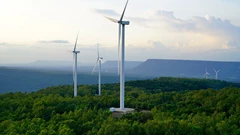
WEC Energy Offered $2.5 Billion US Loan for Renewable Projects

With Trump Looming, Biden’s Green Bank Moves to Close Billions in Deals
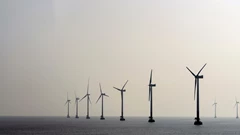
GE Vernova Expects More Trouble for Struggling Offshore Wind Industry

Climate Tech Funds See Cash Pile Rise to $86 Billion as Investing Slows

GE Vernova to Power City-Sized Data Centers With Gas as AI Demand Soars

Longi Delays Solar Module Plant in China as Sector Struggles
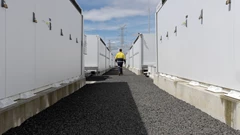
Australia Picks BP, Neoen Projects in Biggest Renewables Tender
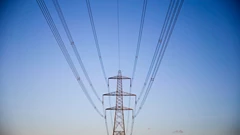
SSE Plans £22 Billion Investment to Bolster Scotland’s Grid
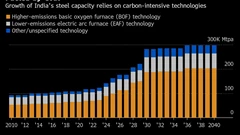
A Booming and Coal-Heavy Steel Sector Risks India’s Green Goals
















